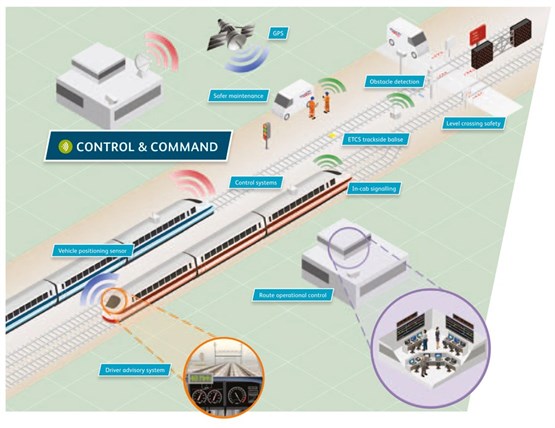One early decision will need to be on the future of the current ETCS programme (see panel). It is best described as a mosaic of installation driven as much by signalling renewal dates as by anything else. It sees, for example, the Aberdeen to Nairn route converted to ETCS in 2024, and the Blyth and Tyne freight lines in 2021.
A fatal accident at Santiago de Compostela in Spain in 2013 showed the risks in switching from one signalling system to another, particularly if one incorporates speed supervision (as ETCS does) with another which does not. It’s a risk Mark Carne specifically mentioned when quizzed by RailReview.
England recognises the need for a decision about the current plan: “We haven’t stopped it at the moment, but one of the first jobs we have over the next weeks (we’ve not got much longer) is to revisit that plan. We’re not stopping doing the Great Western and we’re not stopping doing the East Coast.
“What I do want to understand is how we migrate those from Level 2 to Level 3. Then what I want to understand is what happens beyond that, to make sure that we have our current ETCS rollout plan fitting onto our overall Digital Railway plan. That’s a piece of work that we’re going through - it’s a high-level piece of work to look at what we would do and where in CP6, and then what we would do and where in CP7, but that’s about the height and the level of it at the moment.
“Obviously, what we want to do is more by line of route rather than (as now) based on signals renewals, which is a bit of a patchwork quilt at the moment. So one of the plans will be how we get whole routes onto ETCS, so that we can run an ETCS service from one end to the other instead of having to switch several times in the middle. I think that in the short-term we might be looking at life-extending a few things, so that we don’t have to rush in and replace them immediately with something that we haven’t quite worked out what it should be yet.”
As a top-level ambition, aiming for ETCS Level 3 is admirable. However, it’s not even available today off the shelf. Flick through the brochures of signalling companies, and Level 3 barely rates a mention save for a regional version running on remote lines in Sweden.
UNISIG, the European rail industry body charged with developing the specification of Level 3, has still to complete its work on behalf of the system authority, the European Railway Agency. This leaves NR to either develop its own specifications or to wait for UNISIG. The former has the risk that Britain ends up with a bespoke system based on ETCS but not of ETCS, with all the attendant costs of non-standard equipment. The latter will mean its chances of achieving Carne’s deadline look even more challenging.
England is alive to this problem: “There are two things to do. Firstly - and we’ve already started to get this set up - we need to form a good relationship with the likes of the European Railways Association and the European organisations, to get their help and support in what we want to do and to make sure as far as we can that if, as I anticipate, we are the developers of ETCS Level 3, then we are developing it in a way that as far as we can will fit the rest of Europe and the European model. Again, there has to be a balance there - between how much we can get the balance between the speed and the design right.
“The other thing is how we involve the supply chain. What I would like to do is to effectively form some sort of consortium of not every single supplier, but a small number of suppliers that we can work with collectively to develop this technology. We develop it as open technology, so that once we develop it we can then go through the normal competitive processes for the more detailed design and installation work.”
Many of the technical challenges surrounding Level 3 have been worked through in various systems that act in a similar way. According to one experienced signalling company, the challenge lies much more in standardising these ideas and putting them into one specification.
Resignalling
Doubtless engineers will bring a way of ensuring the integrity of a train. Detection equipment on the track in Level 2 identifies a split train, but Level 3 relies on the train knowing that it’s complete. For multiple units with wired connections between every vehicle, this could be simple. But it’s a bit trickier for a train of freight wagons connected by air brake hoses.
The difference between Level 2 and Level 3 must be taken into account when planning resignalling. Should a Level 2 scheme come with changes to track layouts, then the new detection equipment installed will become redundant early when Level 3 takes over. Better to change layouts only when shifting to Level 3. Effectively, this means that NR should resignal straight to Level 3, leaving only the East Coast and Great Western lines on the interim Level 2 system.












